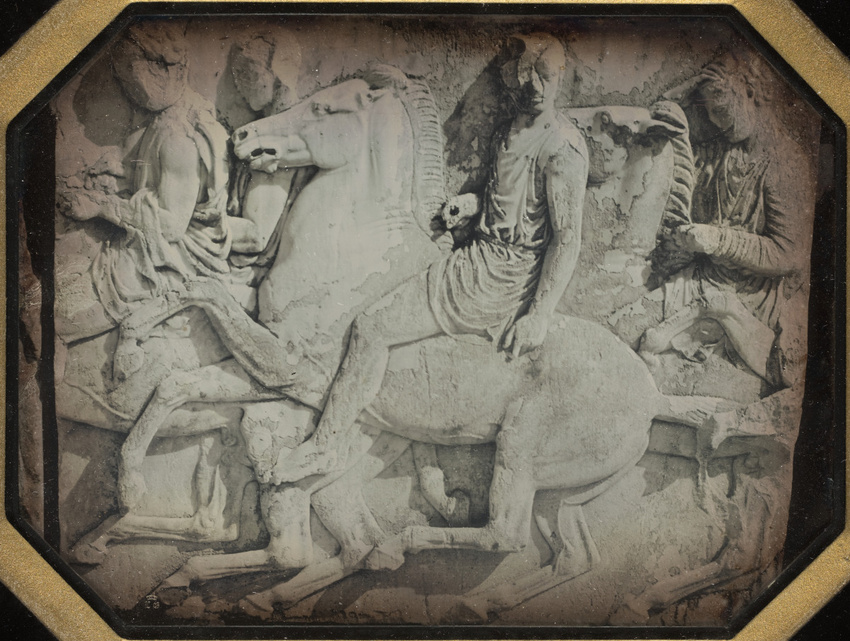Détail de la frise des Panathénées, Parthénon, Athènes
A painter and draftsman, Baron Gros started creating daguerreotypes as early as 1840. In 1851 he was a founder member of the Heliographic Society, serving briefly as its first president.
Being a diplomat, he traveled a lot. From January to June 1850, he was in Greece as a plenipotentiary minister, interceding on the issue of the Anglo-Greek dispute over the “Elgin Marbles,” which had been removed from the Parthenon by Lord Elgin and transferred to London in 1816. That May, for ten days the diplomat took some time off and, for his own enjoyment, set about photographing the ancient sites, producing some eighty daguerreotype plates.
In an article published in the newspaper La Lumière in February 1851, the art critic Francis Wey highlighted the great value of these photographs for archeological research. This view of a detail of a Parthenon frieze is outstandingly sharp and shows great technical skill, a recurring feature of Baron Gros’s work (he built up a huge reputation for himself on account of the exceptional quality of his daguerreotypes, earning the nickname “the Napoleon of the plates”).
This peerless photographer also left a set of views of his travels abroad (in London and Bogotá) and of Paris as well (Gare de l’Est, c. 1850, Musée d’Orsay).

